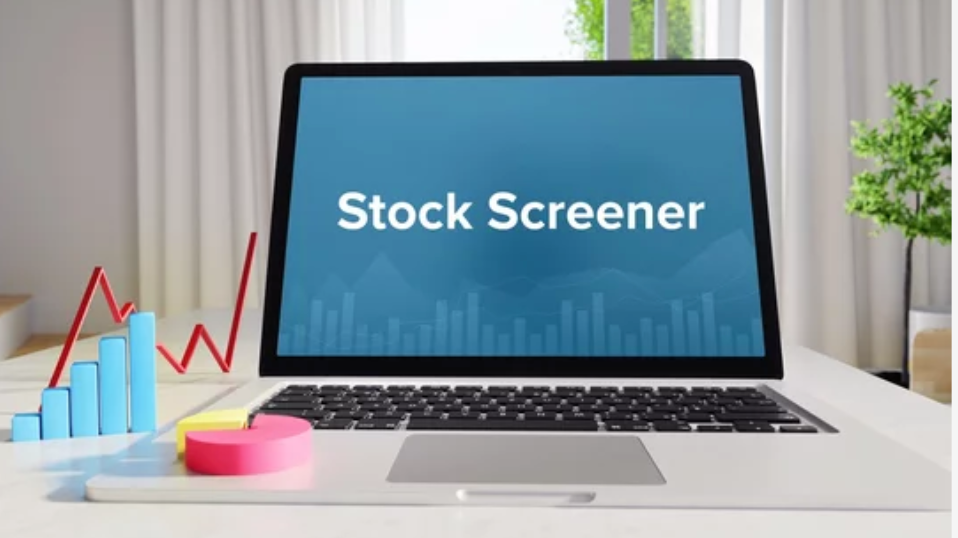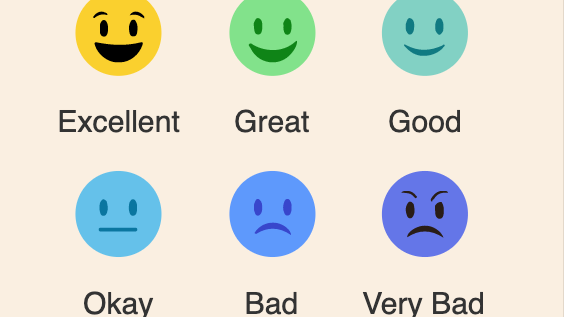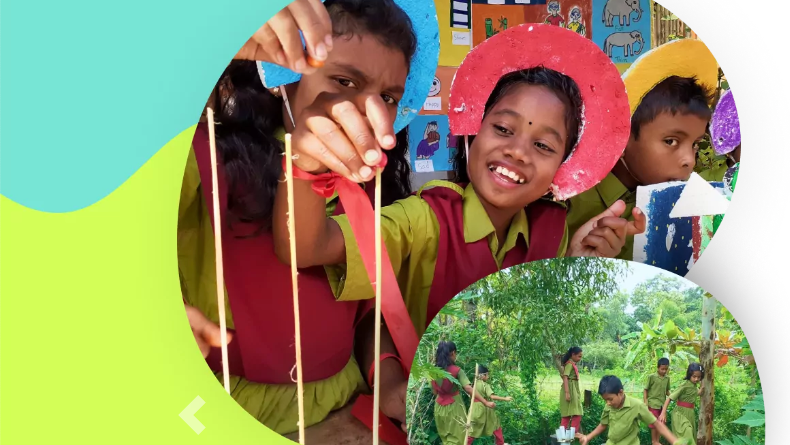Overview
Hempcipher is a patent-pending genetic screening service offered by Icaro Plant Science, which utilizes genetics and machine learning to predict the sex and hermaphrodite propensity of hemp plants. This is the first assay of its kind to identify hermaphrodite tendencies in hemp plants. Initially, the company sought website and marketing support, but upon conducting a user experience (UX) review of their existing process for collecting and submitting samples to the lab, it was identified that the process was tedious and prone to human error, which could lead to inaccurate test results. In response to these findings, the company decided to find and implement a solution to improve this process-oriented issue.
The Challenge
Finding a unique solution within a limited timeframe
Our ambition with the project was to reflect the ease and sophistication of the scientific assay throughout the entire process, from the moment of receiving the testing kit to the collection and submission of hemp samples to the laboratory.
Our high-level goals were to:
• Simplifying sample collecting process to reduce human error
• Automation of sending data to the lab and receiving test results from the lab
• Creating logo and website part of building brand
Users and Audience
Commercial and individual hemp growers who are looking for high CBD yield crops.
Roles and Responsibilities
I led the design of the Hempcipher experience from August 2020 to February 2021. There was one more junior designer and a developer on the team. In addition, I worked alongside a data scientist from the lab partner.
The beta version of the android app was released in January 2021.
The beta version of the android app was released in January 2021.
Scope and Constrain
Our goal was to build a mobile app in 3 months. However, user research like contextual inquiry or field study on collecting samples was not possible due to the pandemic. Additionally, being a startup led to scope creep with the added task of designing and developing a lab portal for lab tests.
The Process
Outline of Work
- End-to-end UX Analysis
-Competitive analysis, user interviews, survey
- Designing low and high-fidelity prototypes for Hempcipher aop
- Building a tab portal to track the shipping and receiving of the test kits, testing in progress, and publishing the test result results.
- Creating a user manual.
- Usability testing and finalizing the design
End-to-end UX analysis
Testing Kit- The Hempcipher testing kit includes a 96-well DNA plate and a biopsy pen for collecting sample tissue from hemp leaves. The DNA plate has 12 columns with numerical values from 1 to 12 and 8 rows with alphabetical values from A to H. Each well has an alphanumerical value depending on the row and column number. The 96 wells are labeled as 1A to H12. H12 well is for control and must leave empty while collecting samples.
The Biopsy pen is used to collect plant samples by pressing the leaf against the finger tip and pulling it away, collecting a small amount of tissue. The collected sample then be ejected to the DNA plate well.
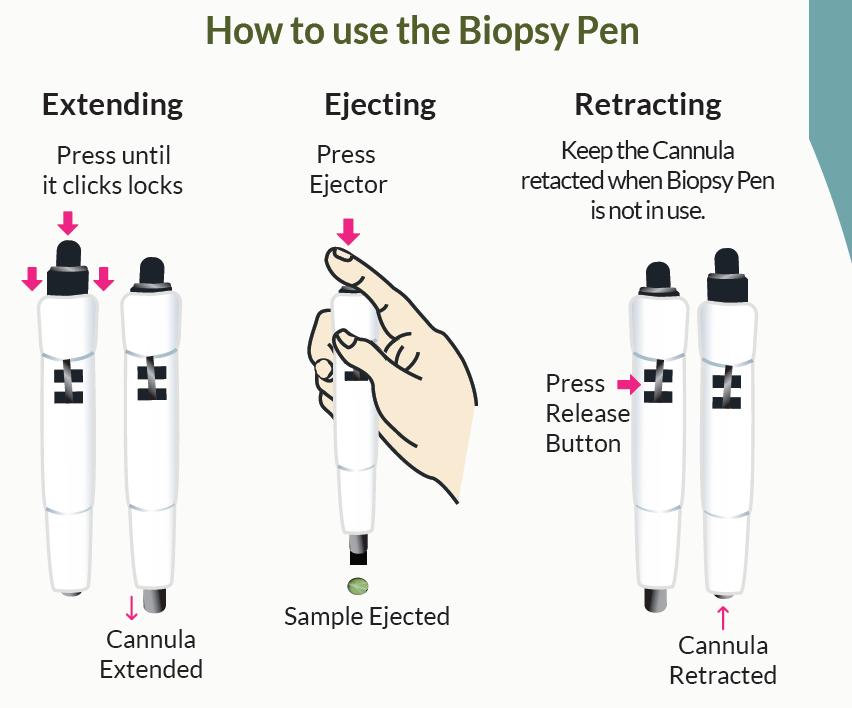
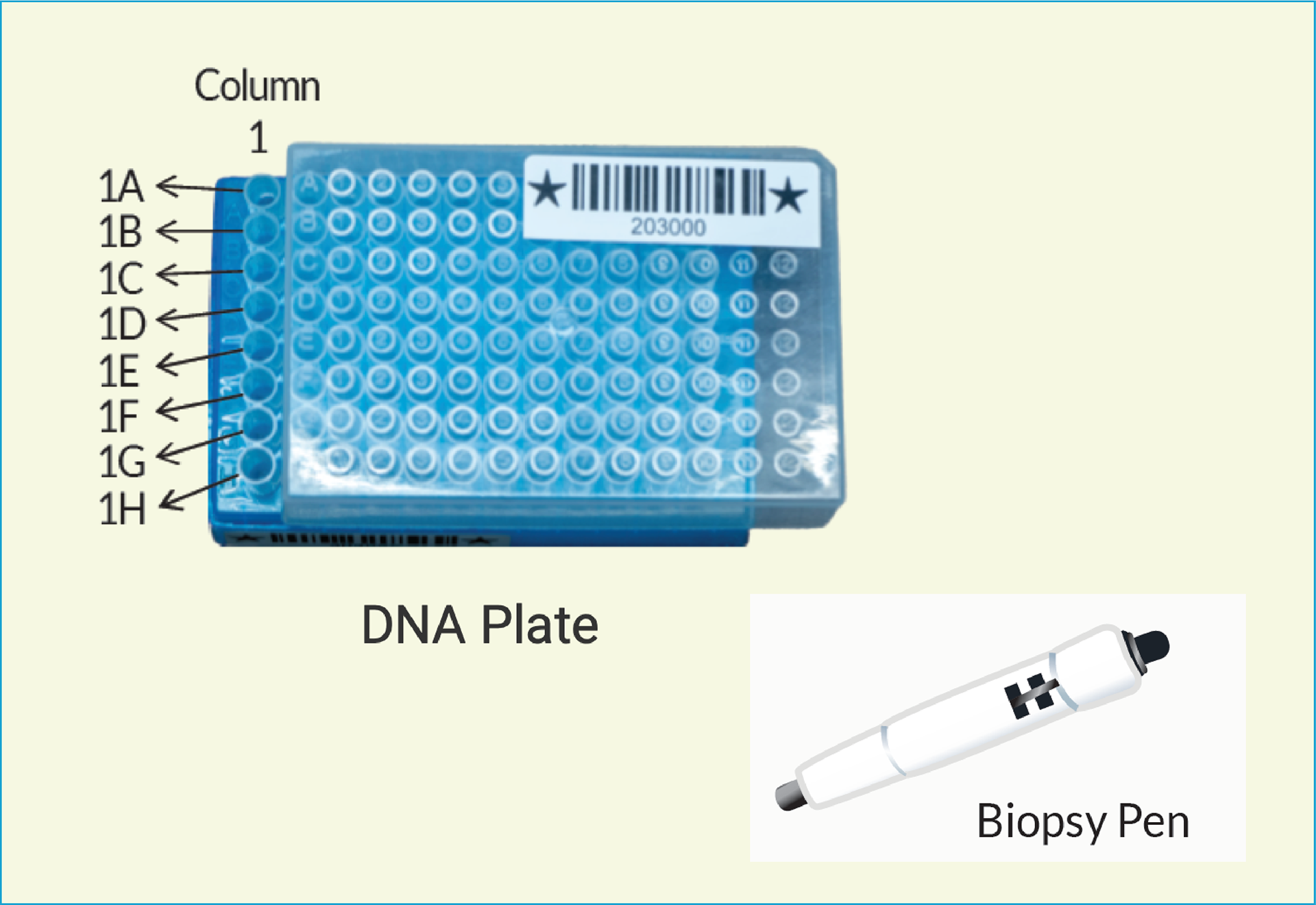
Sample Collection- The existing sample-collecting process was tedious and highly susceptible to human error. Some major pain points were
1. Not having an easy instructions. The tissue-collecting manual was text heavy and a lot to absorb
2. Users required additional work like wrapping their fingers with a lab or scotch tape to protect their fingers from the biopsy pen while collecting samples.
3. Manual tasks like writing plant tags and attaching them with the correct plant and mapping the plates with the collected sample while physically collecting the sample creates multi-tasking and cause losing track of work
4. Users are also required to fill out a tissue sample identification form after each collection or group of collections. This creates additional destruction in between sample collection
5. Users often forget to keep the H12 well Empty as there was no indication to leave it for control. This caused the discarding of the entire testing plate.
6. After collecting all samples users had to submit a 10 steps google form, with 8 to 10 questions in each section, to the lab. They needed to refer to the plate map and sample identification form to complete the google form. Mismatching information can cause wrong test results.
7. Lab can not run tests until they get a physical sample. Ideally, growers need to send the sample by the next day of shipping. They often delay sending samples to the lab, causing the samples to spoil and resulting in compromised test results."
Painpoints in current sample collecting process
Survey: We conduct a survey to find out what are the major human error involving to the process.
Major Human Error in the process
Competitive Analysis
Hempcipher (formerly known as FloraCast) had a default competitive advantage as it was a scientific breakthrough in finding hermaphrodites. While traditional plant identity test involves only Y chromosome markers, Hempcipher sexing assay targets were discovered by applying machine learning techniques to a diverse training set of genes. However, when we run a competitive analysis among the top competitors, the insight revealed that the process need an overhaul.
Comparison by Hempcipher (FloraCast)
SWOT analysis by us
This thrilling slideshow of our competitive edge convinced the startup to eagerly re-evaluate their proposed solution!
THE SOLUTION
Breaking the Mold: Pioneering Approaches
Our proposed cohesive solution addressed end to end UX issues Starting from packaging to submitting sample to the lab and sending back test result to customers.
Minimizing manual and digital form submission : To save time and human error we needed to find a way to simplify sampling-related questions. We worked with the data scientist to refine questionnaire and reduced to 3 questions from 10 steps google form and a manual form. Most of the questions in those forms were related to individual plant sample. After series of discussion lab scientists confirmed that no individual plant data is required. Collective data will work just fine. Even though it is written on the card that lab will not process the test plates without this card, introduction of the mobile app reduces this pain point as well. The app collects this data in the process of collecting sampling.
Improved Packaging and Accessories: The proposed package suggested to add additional accessories like finger cot to address safety issue while using biopsy pen and a easy to follow user manual. It also suggested to add pre-printed plant tags , numbering from 1A to 12G, to save growers the task of writing hand written tags.
Improved Sample Collecting and Data Submission Process: These process has been immensely improved by introducing Hemcipher mobile app. Hempcipher app not only minimized human error by replacing all manual documentation while collecting samples but also saved time. In addition, it added huge brand value and competitive advantage to the product by bringing ease in collecting samples, and by introducing automation in submitting sampling data to the lab. In addition, it can provide scheduling pickup with FedEx to omit delay in sending back the DNA plate with samples to the lab for testing and analysis.
Initial Ideation of the App
How does Hempcipher App Work
The proposed solution requires generating and assigning a unique QR code to each DNA Plate. Each DNA plate will have their own set of pre-printed plant tag with Plate ID. The QR code generates right after a customer orders a DNA test kit online. That way the QR code can store information like the buyer's name and test type related to the purchased kit.
After receiving the test kit, customers need to open the downloaded app and just scan the QR code on the plate. The scanning reveals the order details like order ID, number of purchased kits, test type, customer name, etc. After confirming related information the app guides users on how to collect samples.
After receiving the test kit, customers need to open the downloaded app and just scan the QR code on the plate. The scanning reveals the order details like order ID, number of purchased kits, test type, customer name, etc. After confirming related information the app guides users on how to collect samples.
App Workflow
Collecting Sample: With the help of this app sample collection becomes easier than ever. Each sample can be collected by following 3 easy steps-
1. Put Plant tags in the plant pot for a column.
2. Ensure that the printed tag corresponds to the DNA plate well number on the mobile app screen while collecting and inserting the leaf sample with the biopsy pen.
3. Tap the "collected" button on the mobile screen to mark it as done.
Submitting Sample: After finishing the sampling, users need to send the plate data to the lab by clicking Submit to Lab button. Most of the growers collect samples in greenhouses where there is poor to no internet connection. The Hempcipher app immediately sends the data to the lab if there is an internet connection available. If not, it can save the information and send them away as soon as it gets connected to the internet
Process Improvement
Due to the pandemic, conducting contextual inquiry or field research was not possible. However, through early prototype testing, we discovered that manual documentation of the sample-collecting process was causing users to hesitate taking breaks. This resulted in fatigue and errors in record-keeping. Our app addressed this issue by implementing automation, allowing users to take breaks without fear of losing track of their work. The automation feature also made record-keeping more efficient, resulting in fewer errors and a smoother sample-collecting process
Growers often need to intentionally skip wells to use them as demarcation points for group sampling. However, this can be difficult to track and record manually. Our app addresses this issue by providing a "Keep it empty" option that allows growers to easily mark a well as empty. This not only makes it easy to track and record, but also helps to ensure accurate group sampling.
Growers often need to intentionally skip wells to use them as demarcation points for group sampling. However, this can be difficult to track and record manually. Our app addresses this issue by providing a "Keep it empty" option that allows growers to easily mark a well as empty. This not only makes it easy to track and record, but also helps to ensure accurate group sampling.
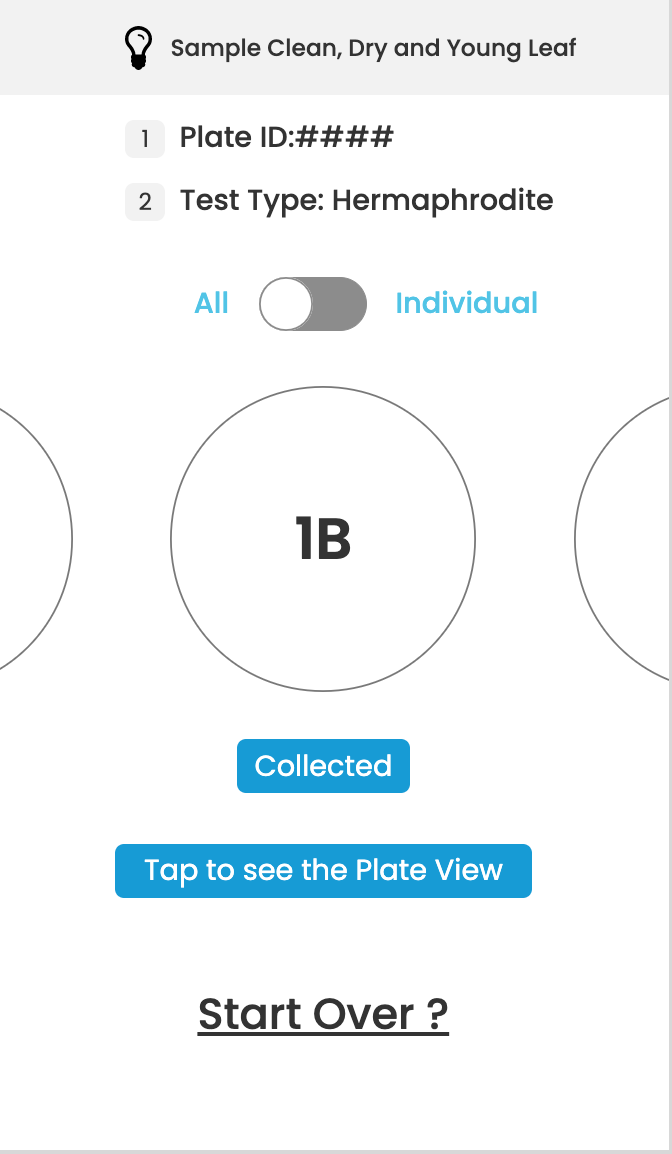

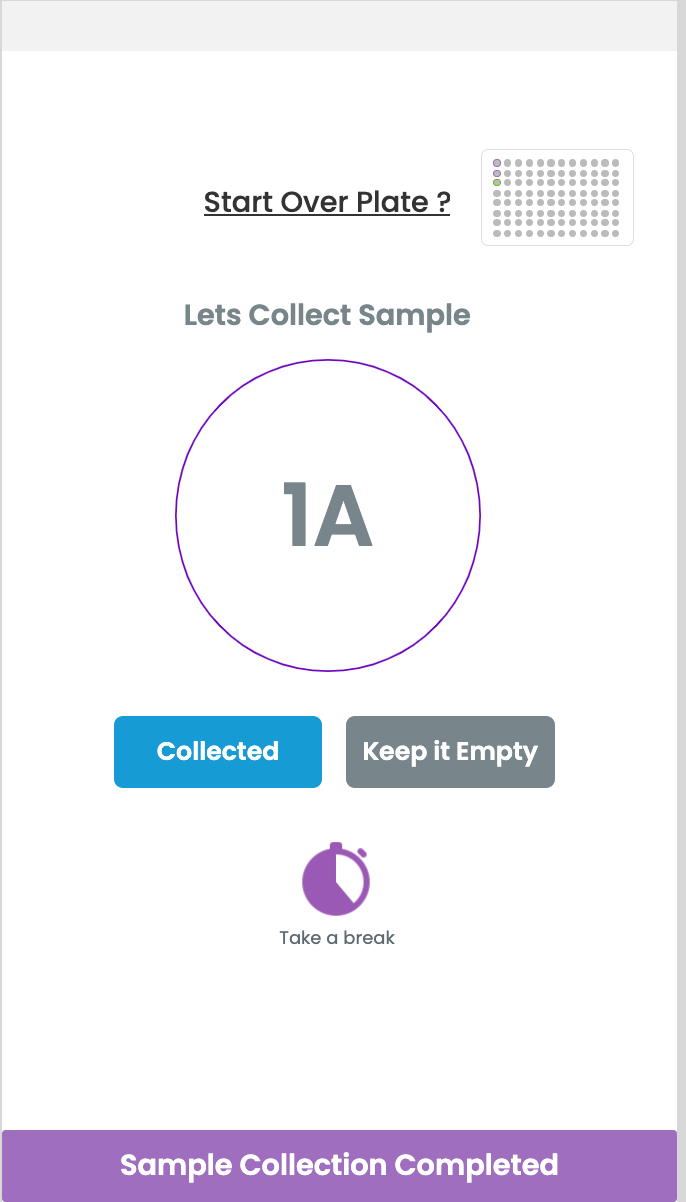
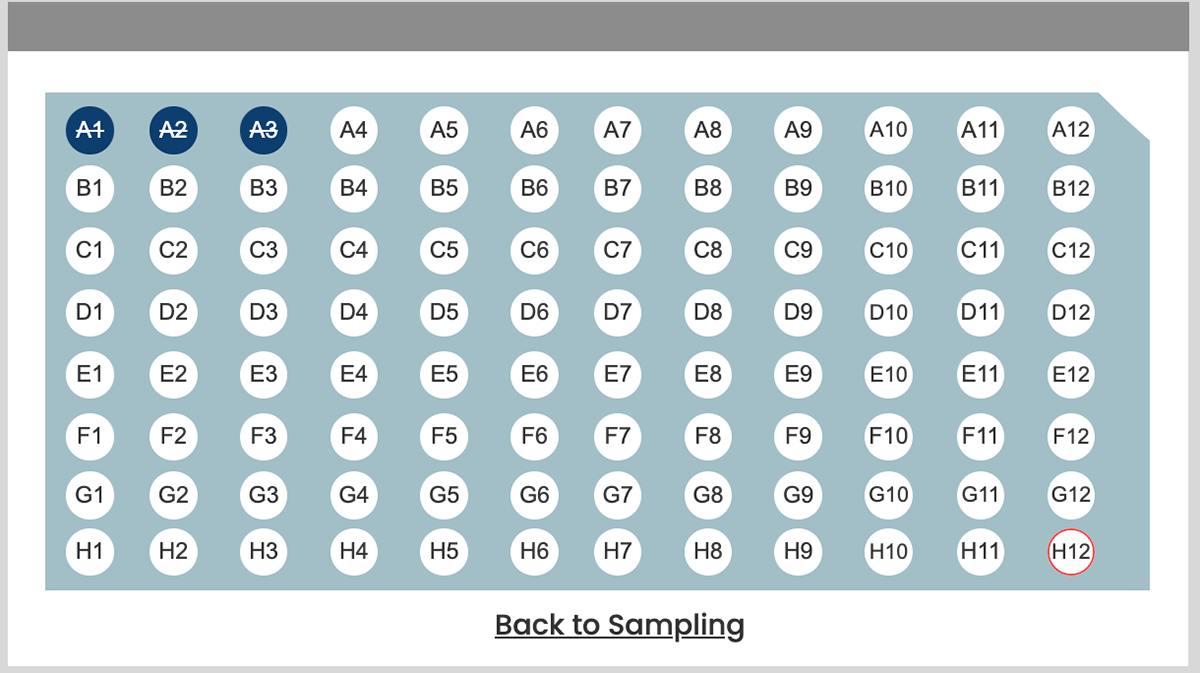
User manual
Final Outcome
The beta version of Hemcipher was a great success in optimizing the previously inefficient sample-collecting system. The main problem we aimed to solve was minimizing human error and the long duration of the sampling process, which often took more than an hour. With the implementation of our smart sample collecting system, we were able to significantly reduce the sampling time to just 20-30 minutes.
To make the lab testing efficient we designed and developed a lab portal that can generate a QR code right after a customer place an order. Scanning the QR code reveals customer and related test information immediately. This resulted in a significant improvement in overall efficiency in processing analysis and publishing test results from the lab.
Final Design
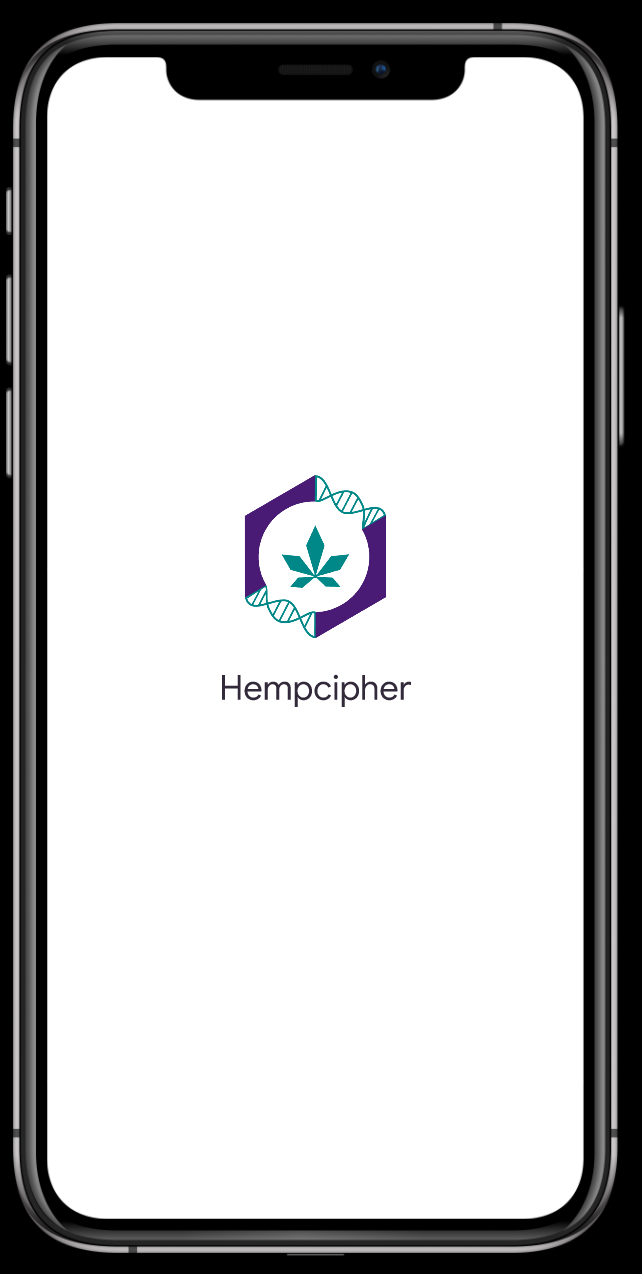

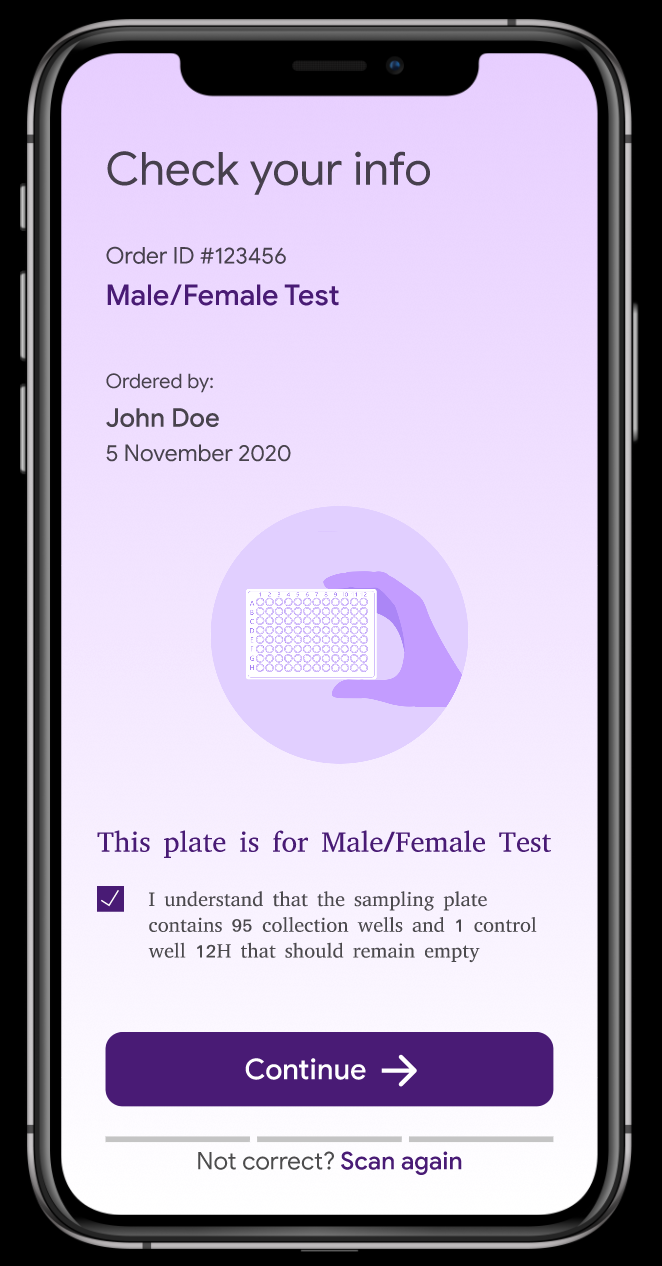
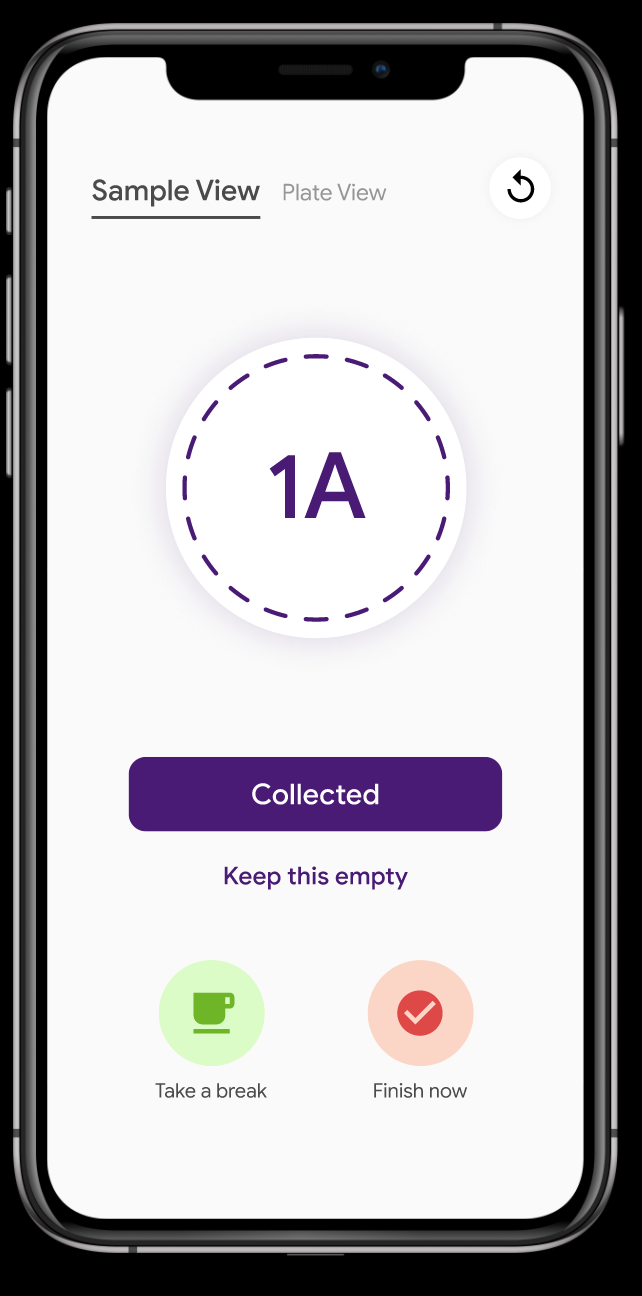

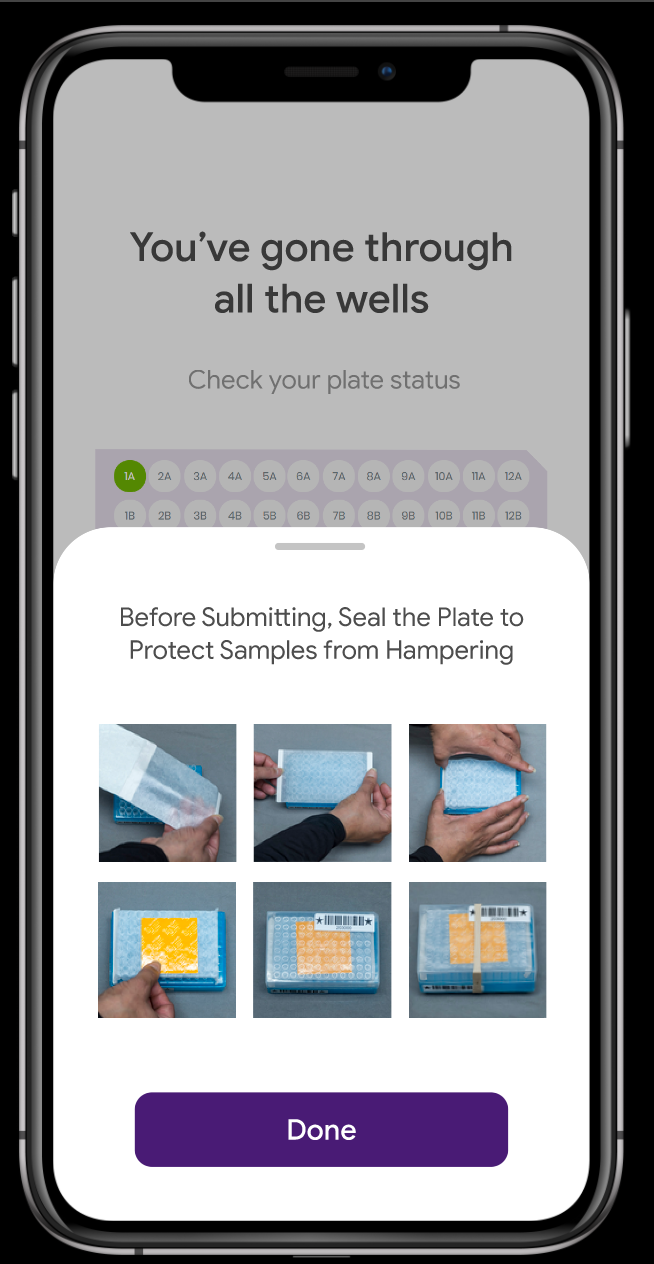


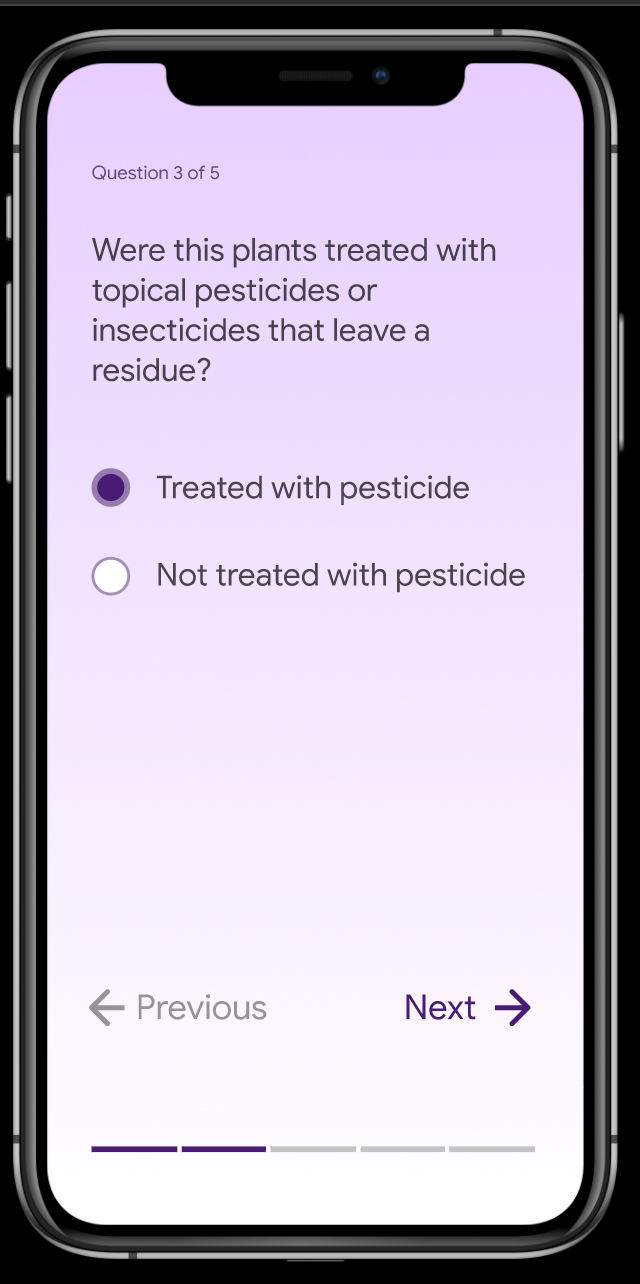
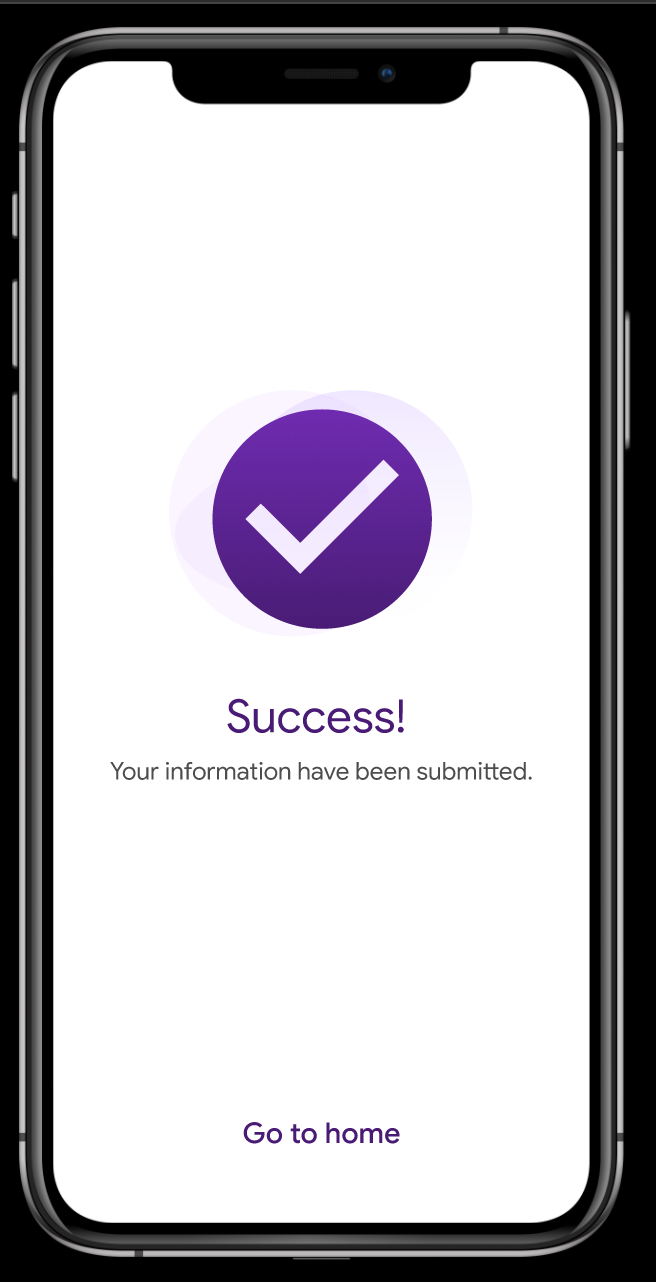
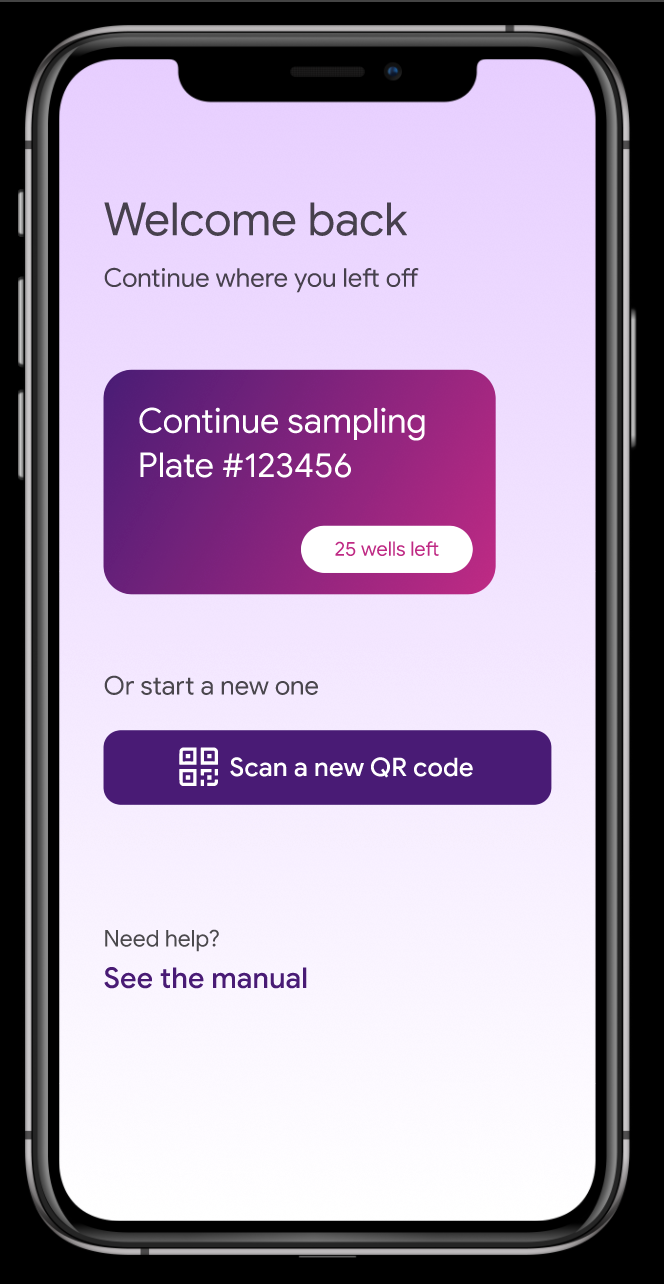
What's Next?
The success of the beta version of the app encouraged us to keep working on the idea that we explored in the ideation phase. The next big task is to notify users about the test result and present the result in an intuitive way. The app can be used to educate growers on selecting better sample leaves by providing video lessons and quizzes.
Reflection and lessons
Working in a startup environment requires an agile mindset and being comfortable with ambiguity. Startups usually perform under a high-paced, short-time frame for achieving goals, which requires team members to perform different roles and responsibilities apart from their formal job description. Having good team dynamics plays important role in thriving such challenges.
